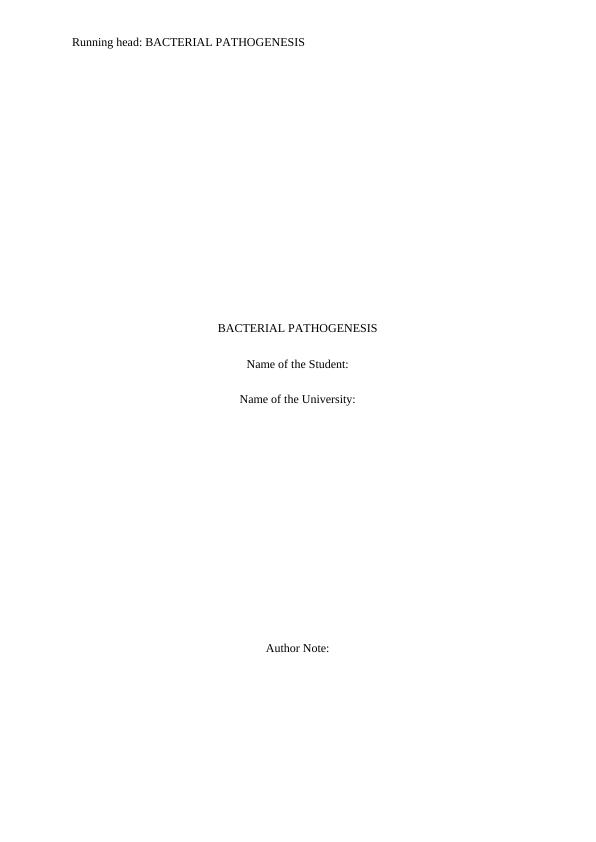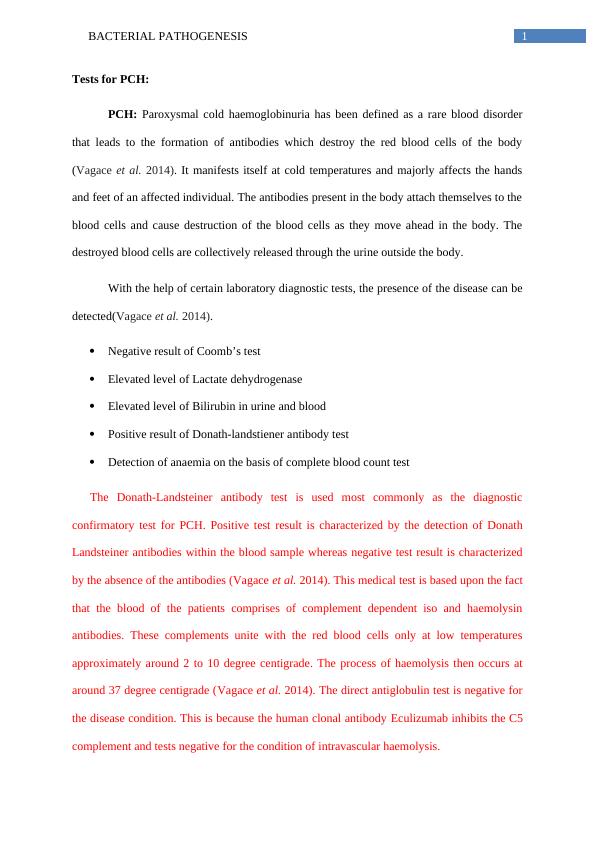Tests and Treatment for Paroxysmal Cold Haemoglobinuria (PCH)
Bacterial Pathogenesis PAMPHLET: Parvovirus in Pregnancy and Paediatrics - Note this is different than the Parvovirus in dogs, it is important we make that clear in the pamphlet
4 Pages768 Words370 Views
Added on 2023-06-03
About This Document
Paroxysmal Cold Haemoglobinuria (PCH) is a rare blood disorder that destroys red blood cells at cold temperatures. This article discusses the tests used to diagnose PCH, including the Donath-Landsteiner antibody test, and the treatment options available, such as immunosuppressive drugs. Precautionary measures and close monitoring of the patient are also important. There are no long-term complications, and transfusion is not possible due to the rarity of the P-negative blood group.
Tests and Treatment for Paroxysmal Cold Haemoglobinuria (PCH)
Bacterial Pathogenesis PAMPHLET: Parvovirus in Pregnancy and Paediatrics - Note this is different than the Parvovirus in dogs, it is important we make that clear in the pamphlet
Added on 2023-06-03
ShareRelated Documents
End of preview
Want to access all the pages? Upload your documents or become a member.
Systemic Lupus Erythmatosis (SLE)
|5
|1214
|17
Case Study for a Patient with Septic Shock
|8
|2409
|366
Pathology Immunology And Epidemology
|12
|3877
|21
Diagnosis and Staging of Cancer Report 2022
|11
|2739
|26
Urinary Tract Infection with Sepsis
|8
|1765
|44
Nursing Practise Assignment 2022
|9
|1971
|11


